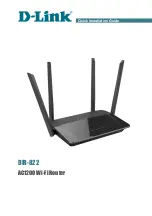
19. DHCP
Client
MN700004 Rev 01
235
The ESB26 Startup Process
When the Nokia ESB26 switch resets or is powered on, it first checks whether it has a valid
startup configuration file. If the configuration file exists and verifies OK, the further startup
process depends on whether or not DHCP is enabled on the switch.
If DHCP has been specifically disabled (i.e. a valid configuration file with "DCHP=disabled"
setting has been found in the non-volatile memory), the switch configures using the startup
configuration file and starts its normal operation. If, which is the most common case, DHCP
is enabled, the switch activates the DHCP Client to update the configuration. If a new
configuration is available, it is downloaded replacing the old one and the switch reconfigures
from the new file. Detailed description of the DHCP clent behavior during this process
follows as a separate section below.
If, at the power-on checkup, the existing configuration file proves to be corrupt, the switch
closes all LAN-ports, turning thus inoperable (so called "Closed mode"). (By default, the
startup configuration consistency check is performed when it is being read from the non-
volatile memory.) In this state, the startup process halts and, of course, no further
configuration steps (like sending DHCP requests and configuration updates) will be taken.
If, at the power-on checkup, it turns out that there is no configuration file at all, as in case of a
brand-new card, the device uses the factory default settings, namely, all LAN ports enabled
with auto negotiation on, no VLANs, Rapid STP and DHCP enabled. In this scenario, because
being enabled, the DHCP client will next attempt to obtain an IP address and configure the
switch. For the factory-preset IP address and the related settings, refer to the Ex-Factory
Default Settings table in the Specifications chapter.
The entrire startup process is schematically presented in Figure 19-1.
DHCP Client Behavior at Startup
As evident from the earlier paragraphs, the DHCP Client is executed at startup in two cases:
1. As part of the normal boot process, if DHCP is enabled;
2. In case of a missing configuration file (when the switch reverts to its ex-factory
defaults).
In these cases, the switch activates the DHCP Client and requests the configuration file name
from the DHCP Server together with an IP address, subnet mask, and default gateway. When
the the file name is received, the DHCP client compares this file name to the name of the
existing configuration file. If the names match, it is assumed that the existing configuration
file is up to date, so it is used to configure the switch.
If the filenames do not match, the existing configuration file is assumed obsolete and due to
be replaced by the one on the server. The TFTP Client then activates to download the file.
(This configuration file always resides on a TFTP server.) Once the new configuration file is
downloaded, its consistency is checked and if it verifies OK, it is saved to the non-volatile
memory and the swicth configures using the new configuration. If the newly downloaded file
proves corrupt, it is discarded and the existing configuration file is used instead (or the swich
goes into Closed mode, respectively, if there has been no configuration file).
















































